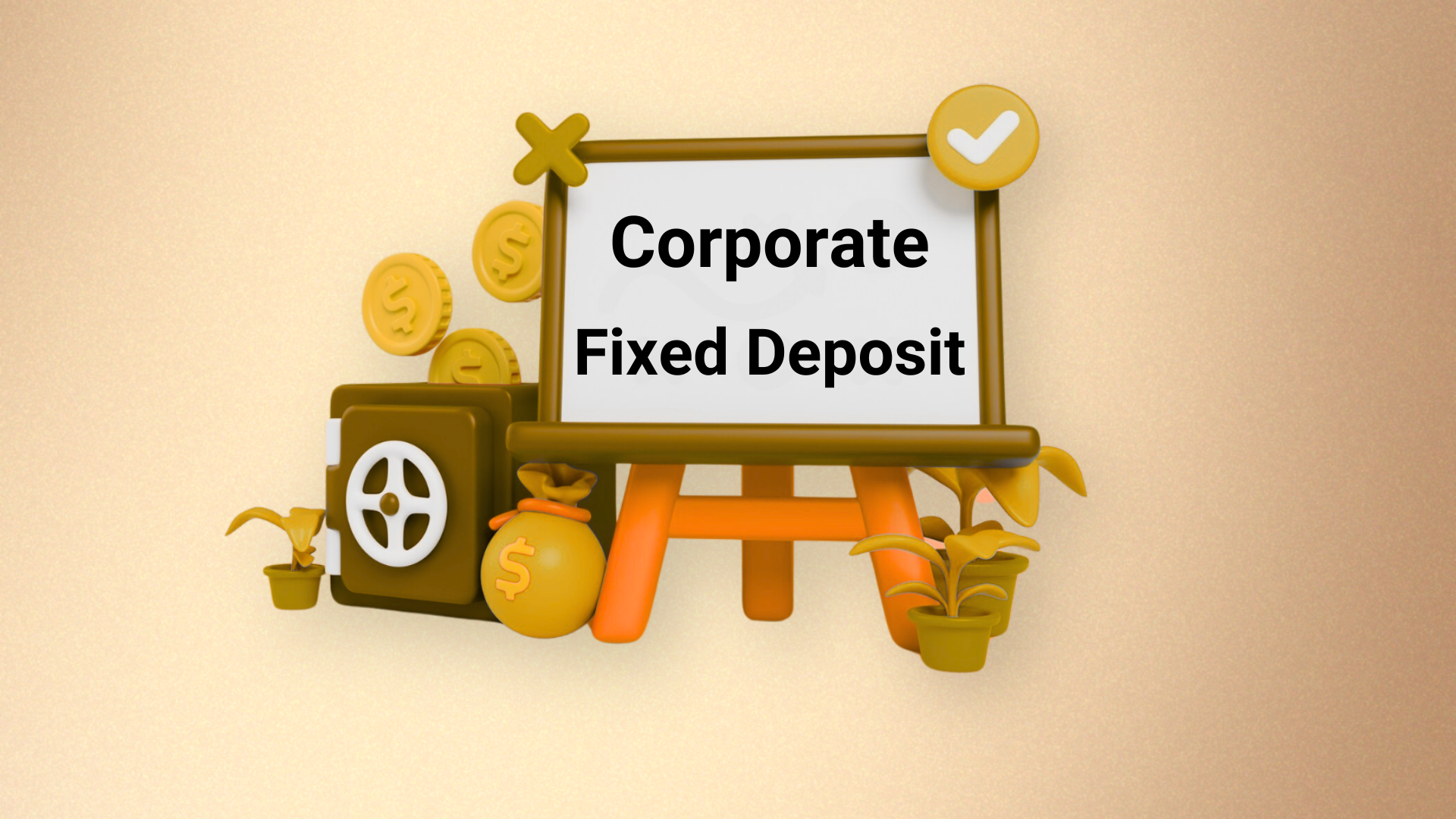Ever wondered if your business’s idle cash could earn more than what regular bank FDs offer? I’ve noticed that many business owners are turning to corporate fixed deposits lately.
They’re searching for better returns without jumping into risky investments. But here’s the real question,
“Are these actually a smart move for your company’s extra funds?”
In today’s KOFFi break, I’m going to dig into corporate FDs, see how they stack up against other options, and help you figure out if they make sense for your business goals.
What Are Corporate FDs?
Corporate fixed deposits are investment products that NBFCs (Non-Banking Financial Companies) and big corporations offer to raise money directly from investors. Think of them as loans you’re giving to these companies, and they pay you fixed interest in return.
Unlike bank FDs that have RBI backing and regulations, corporate FDs follow Companies Act rules. They usually pay higher interest rates because they come with slightly more risk than bank deposits.
How Do Corporate FDs Actually Work?
Corporate FDs work like bank FDs but differ in risk, returns, and regulations. Let me break down how they really work:
Tenure and Interest Structure
These FDs typically come with options from 1 to 5 years, though some NBFCs also offer shorter 3-month plans. The interest rates usually follow this pattern:
- Short-term (up to 1 year): Around 7-8% p.a.
- Medium-term (1-3 years): Roughly 8-9% p.a.
- Long-term (3-5 years): About 9-10% p.a.
Rates vary based on the company’s credit rating and market conditions, but they typically beat bank FDs by 1-3%.
How Companies Issue Them
NBFCs and corporates issue these FDs to raise money for their operations. The process goes something like this:
- First, they get approvals from their board
- Then they register with credit rating agencies
- They create offer documents detailing interest rates and terms
- Finally, they market these FDs through branches or financial middlemen
Interest Calculation Options
You’ll find two main interest payout choices with corporate FDs:
- Cumulative Option: Interest compounds and gets paid at maturity along with your principal. This option generally gives higher total returns, making it great for long-term investments when you don’t need regular income.
- Non-Cumulative Option: You get interest paid regularly, could be monthly, quarterly, half-yearly, or annually. This works better for businesses that need steady cash flow.
Let me show you what this looks like with a real example:
Say your business puts ₹10 lakhs in a corporate FD at 9% p.a. for 3 years.
- With the cumulative option:
– You’d get about ₹12,95,029 at maturity
– Total interest: around ₹2,95,029 - With non-cumulative option, taking quarterly payouts:
– You’d receive about ₹22,500 every quarter
– Total interest over 3 years: roughly ₹2,70,000
That difference of ₹25,029 shows you what compounding can do in the cumulative option.
Understanding the Risks
Corporate FDs carry more risk than bank FDs. As they don’t have deposit insurance coverage (bank FDs are insured up to ₹5 lakhs by DICGC).
To measure this risk, credit rating agencies like CRISIL, ICRA, and CARE rate these companies based on their financial health.
The ratings range from AAA (safest) to D (default):
- AAA/AA+: Very safe bet
- AA/A+: Still quite safe
- A/BBB+: Reasonably safe
- BBB/BB: Somewhat risky
- B/C: Pretty risky
- D: Already defaulted
For most businesses looking to invest safely, stick with AA or above ratings unless you’re comfortable with higher risk.
How to Invest
Getting started with corporate FDs isn’t complicated:
- Pick a company and FD scheme based on their rates and ratings
- Complete your KYC (PAN, Aadhaar, bank details)
- Fill out their application (paper or online)
- Send payment via NEFT/RTGS or cheque
- You’ll receive an FD certificate or digital confirmation
Corporate FDs vs Bank FDs: What’s Really Different?
Understanding what sets these two apart can help your business make smarter investment choices:
Feature | Corporate FDs | Bank FDs |
Interest Rates | Higher (7-10% p.a.) | Lower (5-7% p.a.) |
Safety | Decent to good (depends on rating) | Very high (RBI backing) |
Insurance | None | Covered up to ₹5 lakhs by DICGC |
Early Withdrawal Penalties | Steeper (1-2%) | More lenient (0.5-1%) |
TDS Rules | 10% TDS if interest exceeds ₹5,000 | 10% TDS if interest exceeds ₹40,000 (₹50,000 for seniors) |
Loan Against Deposit | Limited options, lower LTV ratio | Easily available, up to 90% of deposit value |
How quickly you can get your money | Slowly | Fairly quick |
Corporate FDs give you better returns but they come up with slightly higher risk and less flexibility compared to bank FDs.
When Do Corporate FDs Make Sense for Businesses?
Corporate FDs can be fantastic tools in certain situations, but they’re definitely not right for everyone. Let me walk you through when they might work well and when they probably won’t:
When they make good sense:
- For medium businesses having extra cash
- Businesses already having diversified portfolio
- For steady-income businesses
- For tax-efficient returns
When you should probably avoid them:
- Businesses which need emergency funds/money
- Businesses whose cash flow is unpredictable
- Businesses whose interest rates are climbing
Top 10 Banks/NBFCs Offering Corporate FDs
If you’re thinking about corporate FDs for your business, here are some solid options as of March 2025:
- Bajaj Finance
- HDFC Ltd
- Shriram Finance
- PNB Housing Finance
- Mahindra Finance
- Tata Capital
- ICICI Home Finance
- LIC Housing Finance
- Sundaram Finance
- Aditya Birla Finance
Best Alternatives to Corporate FDs
While corporate FDs offer good returns, they’re not your only choice for managing your business’s extra cash. Here are some alternatives:
- T-Bills: These government-backed securities come with 91, 182, and 364-day options. They’re totally safe with slightly lower returns than corporate FDs.
- Liquid Funds: These mutual funds invest in short-term money market instruments and generally offer better flexibility than FDs, with comparable returns and potential tax advantages.
- Bank FDs with Sweep-in: These clever accounts combine bank FD safety with better access to your money by automatically moving excess funds to FDs and back to your current account when needed.
- Arbitrage Funds: These funds take advantage of price differences between cash and futures markets, offering tax efficiency that’s particularly useful for businesses in higher tax brackets.
- Corporate Bonds: Direct bond investments can yield more than corporate FDs and offer secondary market liquidity, though you’ll need more market knowledge to handle them well.
Each option balances risk, return, and access to your money differently. The best option depends on your business’s financial needs.
Final Thoughts
Corporate FDs sit somewhere in the middle of the risk-return spectrum. They let businesses earn more than bank deposits without diving into truly risky investments. They work best as part of a mixed approach to managing your treasury rather than putting all your eggs in one basket.
Before you invest, take a good, hard look at your business’s cash flow patterns, how much money you might need on short notice, and how comfortable you are with risk. Compare ratings from different agencies and read the small print about early withdrawal penalties and TDS rules.
Was this helpful?
Click on a star to rate it!
As you found this post useful...
Follow us on social media!
We are sorry that this post was not useful for you!
Let us improve this post!
Tell us how we can improve this post?


 Ask us Anything!
Ask us Anything!